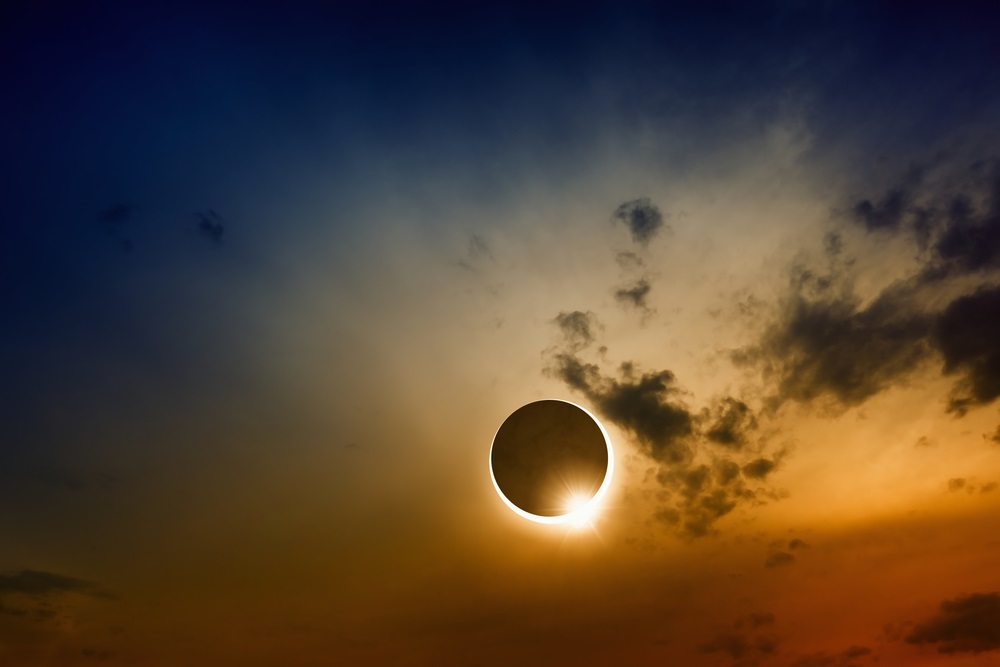How to Experience the Great American Solar Eclipse Without Damaging Your Vision
Submitted by Elman Retina Group on August 18, 2017
Baltimore, MD – August 18, 2017 — On Aug. 21, millions of people in the U.S. will see day turn to night as a total solar eclipse passes over North America. The last time this happened from coast to coast was 1918. Temperatures will drop rapidly as the moon completely covers the sun. You will be able to see the spectacular colors and light of the sun’s atmosphere, a sight revealed to us only during a total solar eclipse.

While you cannot completely prepare yourself for the sight of a total solar eclipse, ophthalmologists — physicians who specialize in medical and surgical eye care — want you to be prepared with proper eye protection. Viewing even the smallest sliver of a crescent sun peeking out from behind the moon is enough to cause irreversible damage to your vision.
Russell N. Van Gelder, MD, Ph.D., a clinical spokesperson for the American Academy of Ophthalmology, has treated patients who have lost vision to the sun.
“The complete solar eclipse is a wonderful and memorable phenomenon that should be experienced by everyone in the eclipse path,” said Dr. Van Gelder. “It is essential, however, that viewing is done safely. Viewing the sun directly, even for brief periods, can cause permanent damage to the retina and result in blindness. I have patients who viewed the sun 40 years ago, who remain without central vision in their affected eyes.”
“Retinal burns from viewing the sun are extremely rare but can severely and permanently damage vision. I am hoping people will view the eclipse safely and avoid damage to their eyes,” said Michael J. Elman, M.D., Founder and Director of the Elman Retina Group in Baltimore, Maryland.
Dr. Van Gelder explains that the lenses in your eyes act like a magnifying glass, one that is 5 times more powerful than a handheld magnifier. Think about how you can use that typical handheld magnifier to focus the sun to burn holes in paper. That’s what happens when you look at the sun without eye protection. You focus the sun’s light on the retina, burning holes in light-sensitive photoreceptor cells, causing blindness.
There is one exception to this rule. There is a brief phase during a total solar eclipse when it is safe to look directly at the sun. This phase is called totality, and it lasts about 2 minutes. It occurs when the moon entirely blocks the sun’s bright face. But as soon as the sun begins to reappear, put the solar filters back on. The path of totality for the Aug. 21, 2017, total solar eclipse is about 70 miles wide and stretches from Oregon to South Carolina. It passes through Idaho, Wyoming, Nebraska, Kansas, Missouri, Illinois, Kentucky, Tennessee, Georgia, North Carolina and South Carolina. Outside the path of totality, sky watchers will see a partial solar eclipse.
The Elman Retina Group and the American Academy of Ophthalmology offer tips on how to safely view this once-in-a-lifetime event
There are no exceptions to the rules for safely viewing a partial solar eclipse. To make sure people have the facts, the American Academy of Ophthalmology has teamed up with the American Astronomical Society to offer these five tips:
- Use specially designed solar eclipse glasses and viewers to block the sun’s harmful rays. Ordinary sunglasses, even dark ones, are not strong enough to protect your eyes. To date, only four manufacturers have certified that their eclipse glasses and handheld solar viewers meet international safety standards:
- Inspect your solar filter before the eclipse, and don’t use it if it’s scratched or damaged.
- Another option is to view the eclipse through #14 welder’s glass. That’s much darker than the shades arc welders typically wear.
- Use solar filters on camera lenses, binoculars, and telescopes.
- Do not use solar eclipse glasses to look through a camera, binoculars or a telescope. The sun can melt the filter and damage your eyes.
For more information on solar eclipse safety, visit the American Academy of Ophthalmology’s EyeSmart® website. The American Astronomical Society also has resources on its website, including tips for how to shoot still images or video of a solar eclipse.
About the American Academy of Ophthalmology
The American Academy of Ophthalmology is the world’s largest association of eye physicians and surgeons. A global community of 32,000 medical doctors, we protect sight and empower lives by setting the standards for ophthalmic education and advocating for our patients and the public. We innovate to advance our profession and to ensure the delivery of the highest-quality eye care. Our EyeSmart® program provides the public with the most trusted information about eye health. For more information, visit aao.org.



